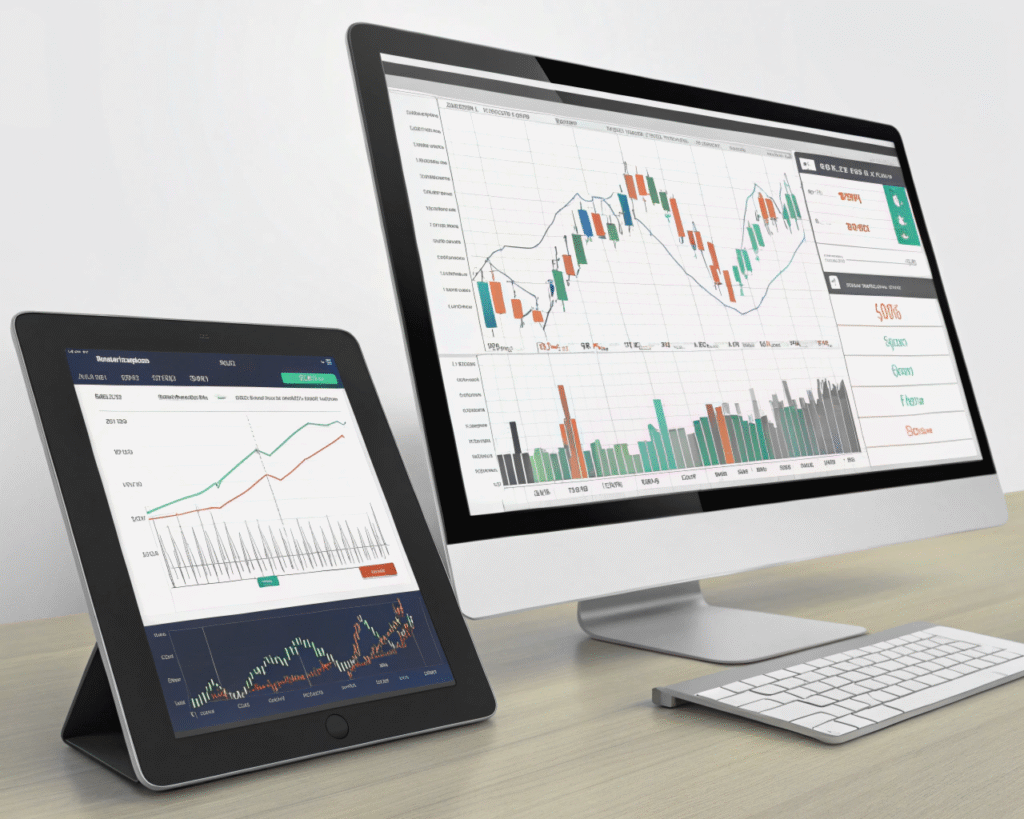
What Is Swing Trading?
Swing trading focuses on capturing short- to medium-term price fluctuations, typically holding positions from a few days up to several weeks. Practitioners rely on chart patterns, momentum indicators and market sentiment to time entries and exits. This approach suits those wanting more frequent engagement and the potential for quicker payouts without committing to intraday monitoring.
What Is Position Trading?
Position trading emphasizes long-term trends, with holdings spanning months or even years. Investors in this camp concentrate on fundamental strength—earnings growth, macroeconomic factors, industry shifts—and tolerate interim volatility in pursuit of sizable gains. Since timing is less urgent, traders can afford to step away from screens and focus on big-picture developments.
Core Distinctions Between Swing and Position Trading
| Feature | Swing Trading | Position Trading |
| Time Horizon | Days to weeks | Months to years |
| Analysis Style | Technical signals, chart patterns | Fundamental research, economic data |
| Capital & Leverage | Modest margin, moderate gearing | Full capital or minimal margin use |
| Trade Frequency | Several trades per week | Few trades per quarter/year |
Time Horizon & Holding Period
Short-term speculators react to fleeting market swings, closing opportunities within days. In contrast, long-term holders accept extended drawdowns to ride enduring trends.
Analysis Techniques: Technical vs. Fundamental
Chart-based tools (moving averages, oscillators) dominate the brevity of swing plays, whereas position players dig into balance sheets, sector outlooks and central bank policies.
Capital Requirements & Leverage Usage
Because positions turn over faster, swing operators often deploy borrowed funds to amplify returns, mindful of margin calls. Position traders may avoid leverage entirely or use conservative gearing to minimize funding costs.
Trade Frequency & Daily Commitment
Active swing traders check markets multiple times daily to manage stops and targets. Position strategists schedule occasional reviews—perhaps weekly or monthly—since their bets unfold over longer cycles.
Pros & Cons of Each Approach
Advantages of Swing Trading
- Faster opportunity realization and compounding potential
- Reduced exposure to overnight or weekend gaps
- Numerous chances to profit in trending or choppy markets
Drawbacks of Swing Trading
- Higher transaction costs from frequent entries/exits
- Stress from constant decision-making and monitoring
- Greater vulnerability to sudden news-driven spikes
Advantages of Position Trading
- Lower turnover and associated fees
- Benefit from dividends, buybacks and corporate actions
- Less emotional strain from short-term volatility
Drawbacks of Position Trading
- Capital tied up for prolonged periods
- Significant interim drawdowns may test discipline
- Missed short-term gains in sharply trending phases
Assessing Risk Profiles
Volatility Exposure
Short-term players face rapid swings that can wipe out gains or trigger margin calls; long-term investors absorb larger but less frequent price moves.
Psychological Demands
Quick pivoting and rapid decision loops suit nimble minds; patient strategies reward those comfortable with extended uncertainty.
Suitability to Market Conditions
Trend followers thrive in sustained moves, whether over days or months. Sideways markets often favor shorter-term tactics, while clear long-term trends benefit position holders.
Matching Strategy to Your Goals
Pursuing Short-Term Income vs. Long-Term Growth
If supplementing income through regular gains is a priority, targeted swing plays may fit. For wealth compounding over years, a buy-and-hold orientation generally yields steadier returns.
Aligning with Your Time Availability
Busy professionals with limited screen time may gravitate toward infrequent position trades. Those who can dedicate daily attention often prefer the immediacy of shorter-horizon opportunities.
Balancing Risk Appetite & Capital Base
Smaller accounts might leverage short-term moves carefully, but higher net worth investors often have the flexibility to hold sizable stakes without leverage.
Tools, Platforms & Resources
Charting Software & Order Types
- Advanced platforms with drawing tools, automated alerts and bracket orders benefit swing techniques; consider MetaTrader 5 (mt5 app download) for its robust charting capabilities and seamless mobile–desktop sync.
- Position traders may prioritize fundamentals dashboards, economic calendars and corporate news feeds.
Market News & Research Feeds
- Real-time data for earnings releases or central bank updates helps all styles.
- In-depth reports on sector trends or macro outlooks inform long-term convictions.
Risk-Management Features
- Trailing stops and margin calculators guard against catastrophic losses.
- Position size planners and portfolio heat maps assist in balancing exposure.
Frequently Asked Questions
What Timeframes Suit Swing vs. Position Trading?
Swing strategies generally use daily or 4-hour charts, while position traders lean on weekly or monthly charts to spot enduring patterns.
Can You Combine Swing and Position Strategies?
Yes—hybrid approaches allocate a core long-term stake alongside smaller, nimble positions to capture intermediate opportunities.
How Much Capital Is Needed to Begin?
Swing trading can start with modest sums if leverage is used cautiously; position investing often demands larger outlays to achieve meaningful diversification without borrowing.
